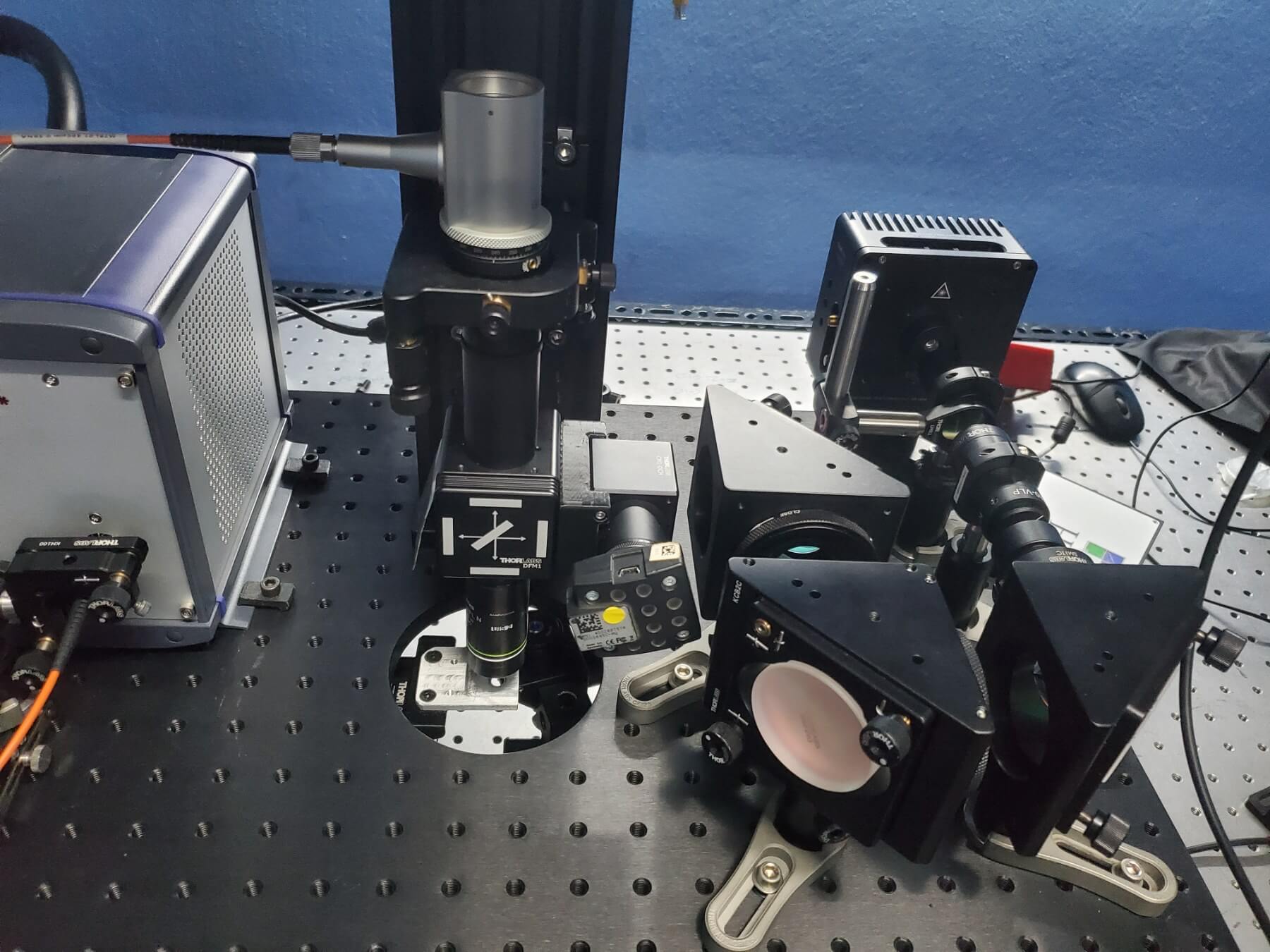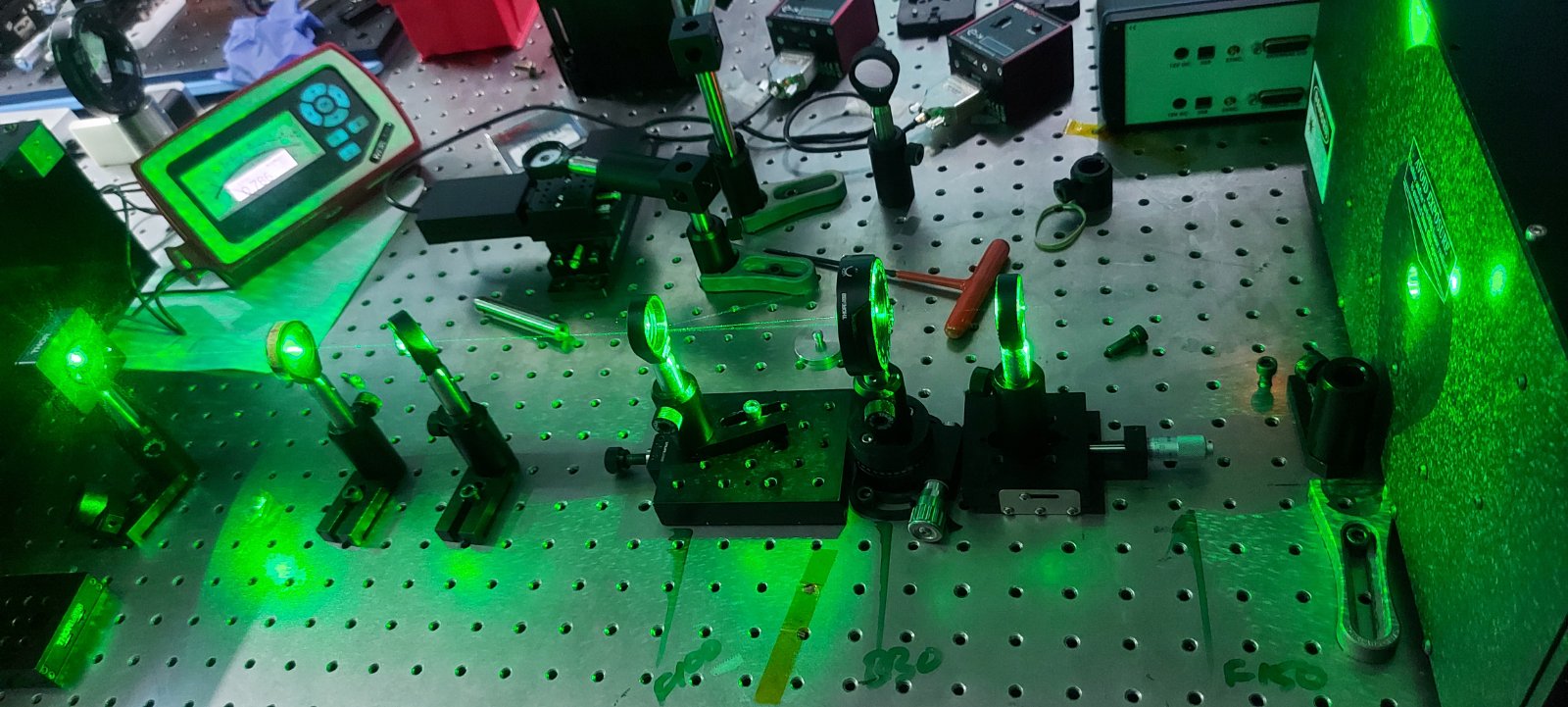


Our current discovery research projects are focused in understanding light-matter interaction to sense and explore biological processes. Please see below for details.
Problem:
Detection and treatment of infectious diseases has been a long standing challenge in developing societies. The problem is made worse by the excessive use of general antibiotics, often used without necessary diagnostics. Understanding the microorganisms and their metabolism is a key to develop low-cost and simple-to-use diagnostics and treatment methods.

Raman spectroscopy is a non-invasive, reagent-less, low-cost, highly specific and generally applicable technique to study molecular properties of living or non-living matter, including fixed bacterial cells. We wish to perform this study with live bacterial cells by trapping them. We will use two methods to trap and study the microorganisms via Raman Spectroscopy:

Optical trapping in a micro-Raman setup is fairly standard now. However, due to diffraction limit - a fundamental physical limit in optics, the Raman signal obtained so far has been a superposition of signals originating from all of the subcellular structures within the measurement volume of the cells and its surroundings. Therefore, enhancing specificity and obtaining information from subcellular structures of live bacterial cells has been a challenging problem in Raman spectroscopy. Our theoretical studies of brownian motion in an optical trap have shown that the response of the different subcellular structures, having different optical and hydrodynamic properties, exhibit different Brownian motion within the cells, and therefore provide different average Raman signal amplitudes when we modulate the excitation light. We will exploit this difference in the signal amplitude to identify the various subcellular structures of a live bacterial cell trapped in the optical field.
This project is partially funded by The World Academy of Sciences (TWAS)/sida/UNESCO

An all-integrated Raman sensing circuit can possibly be mass-manufactured at a cost of a few dollars per chip. In addition to lower cost, such a system has benefits of enhancing the Raman signal as much as four orders of magnitude. If realized, this will revolutionize diagnostics in resource-limited settings in the developing countries.
We are developing on-chip all-integrated Raman spectroscopy systems on silicon nitride photonics integration platform. We will employ the evanescent optical field near the photonic waveguides to provide attractive gradient force on the microorganisms in the transverse direction and propulsive scattering force in the longitudinal direction of the light propagation to perform optical trapping and Raman spectroscopy.
This project is partially funded by The World Academy of Sciences (TWAS)/sida/UNESCO

Imaging microorganisms in order to study them requires complex and expensive microscopy systems, not
readily accessible in developing countries. We realize that one does not really need to image microorganisms in their real-life forms in order to study them as long as we can obtain the specific information we are seeking. We are employing Diffuse Correlation Spectroscopy (DCS) - a technique based on computational optics that senses minute changes in the path of a light beam via laser speckle analysis - to study microorganisms causing diarrhoeal diseases. DCS has been successfully used by our partners in the University of Glasgow for heart and brain diagnostics.
Now we are using it to detect and study microorganisms.
This project is partially funded by University of Glasgow’s GCID Small Grants Fund
Problem:
Photonics circuits have been traditionally developed using nano-lithographic techniques, which either use lithographic masks or e-beam writing followed by dry-etching methods. Both of these approaches are expensive to be implemented in resource-limited settings, which therefore has hindered photonic innovations in developing countries. We are exploring methods to develop a wet-etching method assisted by laser pulses.
Femtosecond laser writing (FLW) involves focusing a laser beam with high energy femtosecond pulses in a suitable material, such as soda-lime glass, fused silica glass etc., in order to selectively change the refractive index of the material and subsequently define photonic structures eg. waveguides in them. While FLW has been demonstrated multiple times, the physical processes involved behind it have not been well-understood. The processes also appear to be different in different conditions and materials. Laser-induced damage and laser-induced densification are two leading processes that have been proposed. Densification, which leads to positive change in the refractive index, without significantly impacting the transmission properties of the material is an ideal candidate for photonic applications. The major objective of this project is to understand and develop a physical model for the densification of glass due to femto-second laser radiation via pump-probe Raman and Brilloin spectroscopy. The model will be valuable to develop reproducible, spatially homogeneous, high index contrast, low-loss, and high quality photonic components on glass substrates via FLW. Development of such components will be immensely useful for photonics applications and innovations in resource- limited settings in developing countries.
This project is partially funded by The World Academy of Sciences (TWAS)/sida/ UNESCO
Problem:
Have you ever wondered about the sheer awesome ability of animals to smell ultra low-concentration of chemicals? The response-time and sensitivity is beyond comparison to any tools humans have yet developed. Imagine a device that can actually “smell” diseases (such as cancers, diabetes, etc via relevant chemicals in urine or breath) as good as some dogs have been trained to do. These devices will change the whole paradigm of diagnostics in the developing countries.

A promising but highly-debated theory proposes that olfaction (smelling) involves quantum tunneling of electrons through the odorant when the vibrational energy of the odorant matches that of the electronic transitions of the olfactory receptors. Whether or not actual olfaction involves such a process, the proposed process may be employed for highly sensitive chemical detection. We are developing a pump-probe based Ultrafast Raman spectroscopy setup to study the femtosecond-resolution temporal dynamics of interactions between vibrational energy of an odorant to tunable “artificial receptors”.
This project is partially funded by The World Academy of Sciences (TWAS)/sida/ UNESCO